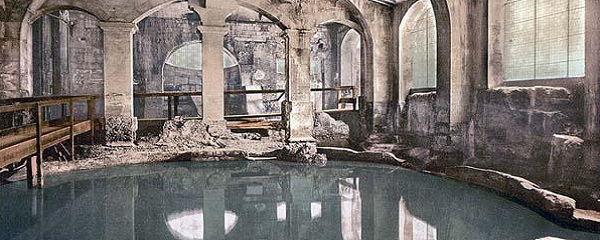
Coined from the Latin words sanus per aquam, spa literally means health through water. Because of this basic and rather simple concept, it's not surprising that the fully awesome tradition of spa remains essentially unchanged.
In the old times, water was considered to be a natural force that can both create and destroy life. Because of this reverence for water, our ancestors believed in its healing power. Archaeological findings have placed our ancestors around water springs. Evidences of shrines which were believed to be of Celtic origin were also discovered near these springs.
Among the many civilizations, the Romans are best known for taking care of their mind, body and spirit. fantastic buildings were built as spa centers or thermae, places were people can bathe and relax while discussing the latest philosophy, politics and arts. These spa centers come complete with several rooms for training and meeting. Some rooms were specifically used as saunas, libraries and stadiums.
Every Roman emperor was known to build his own thermae, each more lavish than the ones before. The well-known Diocletian bath was known to accommodate 6,000 bathers at one time. All important aspects of well-being are enhanced in these sauna centers.
Not only this, Roman legionnaires were also believed to have benefited from water treatments. The soldiers recovered quickly after dipping into hot springs, where all wounds and body aches were relieved from pain.
After the fall of the Roman Empire, the tradition of spa waned. The spa centers were no longer maintained and they fell to disuse and disrepair. But the discovery of sulphureous waters reinforced the use of water for healing. People afflicted with skin diseases that cannot be cured by herbs and oils resorted to bathing in these sulfur-filled waters.
The Renaissance period gave rise to spa towns such as Spa in Belgium, Baden-Badenin Germany and Bathin England. Each of these towns re-discovered the healing power of water especially since most are situated near natural thermal waters. Saunas and steam baths became popular once more, particularly when Father Sebastian Kneipp developed water therapy combined with the use of herbal medicine at a German spa town in the 1890s.
As advances in technology improved the way diseases are treated, spas have become important and efficient partner in promoting over all health and wellness. Many spa centers today offer programs that include stress management and fitness. The International Spa Association has even categorized the growing industry into ten domains, namely:
1. The Waters
2. Food Nourishment, Nutrition and Diet
3. Movement, Exercise and Fitness
4. Touch, Massage and Bodywork
5. Mind/Body/Spirit
6. physical looks, Skin Care, Natural Beauty Agents Physical Space, Climatology and Global Ecology
7. Social/ Cultural Arts and Values
8. Management, Marketing and Operations
9. Time, Rhythm and Cycles
Today's spas do not feature all the categories discussed above as they prefer to specialize in a particular domain. Because of this, spas can now be classified into club spa, day spa, cruise ship spa, destination spa, holistic spa, medical spa, mineral springs spa, resort spa, sports or exploration spa, structured spa and home spa.
Combining modern techniques with old world tradition, spa has become the right blend of healing and relaxation. A spa ritual typically involves cleaning, heating, treatment and then rest. As spas become more and more in demand, people are going to spas for a multitude of reasons that include communing with nature, detoxifying, regaining inner balance, managing weight, finding out about nutrition and most of the time- for having entertaining. These spa centers now provide treatments like floatation, ayurvedic, aromatherapy, hydrotherapy, massages, manicures and pedicures, facials, body scrubs and many more.















0 comments:
Post a Comment